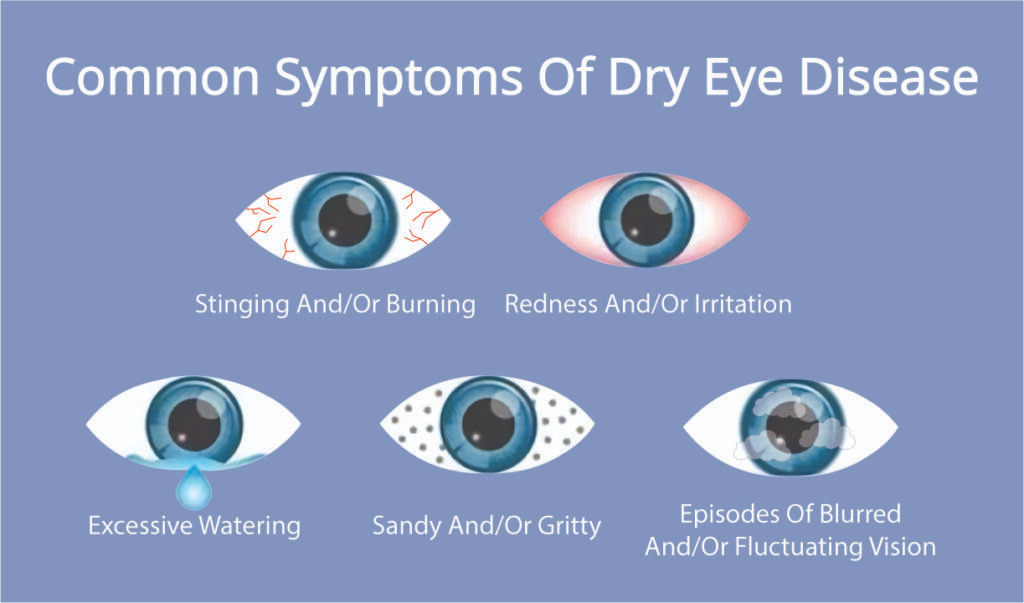Understanding Dry Eye Syndrome: Causes, Symptoms, and Treatment
Dry eye syndrome is a prevalent condition characterized by insufficient tear production or poor tear quality, leading to inadequate lubrication of the eyes. This can cause discomfort and may result from various factors, including hormonal changes, certain medical conditions, and environmental influences. The resulting tear instability often leads to inflammation and damage to the eye's surface.
Understanding Dry Eye Syndrome: Causes, Symptoms, and Treatment
Overview
Dry eye syndrome is a prevalent condition characterized by insufficient tear production or poor tear quality, leading to inadequate lubrication of the eyes. This can cause discomfort and may result from various factors, including hormonal changes, certain medical conditions, and environmental influences. The resulting tear instability often leads to inflammation and damage to the eye's surface.

Symptoms of Dry Eyes
Individuals with dry eyes may experience a range of symptoms, which typically affect both eyes, such as:
-
Stinging, burning, or scratchy sensations
-
Stringy mucus around the eyes
-
Sensitivity to light
-
Redness and irritation
-
A feeling of having something in the eye
-
Difficulty wearing contact lenses
-
Challenges with nighttime driving
-
Watery eyes due to irritation
-
Blurred vision or eye fatigue

When to Seek Medical Advice
If you experience prolonged symptoms like redness, irritation, or discomfort, it's important to consult a healthcare provider. They can diagnose the underlying cause and recommend appropriate treatment or refer you to a specialist.
Treatment Options
Relief from dry eye symptoms often involves lifestyle adjustments and the use of eye drops. Consistent treatment may be necessary to manage symptoms effectively.
Causes of Dry Eye syndrome
Dry eye syndrome can result from various factors that affect the tear film, which consists of three layers: fatty oils, aqueous fluid, and mucus. Disruptions in any of these layers can lead to dry eyes.

Common Causes Include:
-
Decreased Tear Production: This can occur due to aging, medical conditions (like Sjogren's syndrome and rheumatoid arthritis), certain medications, or nerve damage from procedures like laser eye surgery.
-
Increased Tear Evaporation: Factors such as blocked meibomian glands, infrequent blinking, eyelid issues, and environmental conditions can contribute to evaporation.
Risk Factors
Certain factors increase the likelihood of developing dry eyes, including:
-
Age (especially those over 50)
-
Gender (more common in women, particularly during hormonal changes)
-
Diets low in vitamin A and omega-3 fatty acids
-
Contact lens use or history of refractive surgery
Potential Complications
Untreated dry eyes can lead to:
-
Eye Infections: Insufficient tears can increase the risk of infection.
-
Eye Surface Damage: Severe cases may result in inflammation, corneal abrasions, ulcers, and even vision loss.
-
Reduced Quality of Life: Symptoms can hinder daily activities such as reading and driving.
Prevention Tips

Healthy diet high in vitamin A and omega 3
To manage and prevent dry eye symptoms, consider these strategies:
-
Avoid Air Exposure: Keep fans, air conditioners, and heaters away from your eyes.
-
Use a Humidifier: This can add moisture to dry indoor air, especially in winter.
-
Wear Protective Eyewear: Wraparound sunglasses or safety shields can protect against wind and dry conditions.
-
Take Regular Breaks: During prolonged tasks like reading or computer work, take breaks to rest your eyes.
-
Adjust Your Environment: In dry settings (high altitudes or airplanes), frequently close your eyes to minimize evaporation.
-
Modify Screen Position: Position computer screens below eye level to reduce tear evaporation.
-
Avoid Smoking: If you smoke, seek support to quit, and avoid secondhand smoke, which can exacerbate symptoms.
-
Use Artificial Tears: Regular use of lubricating eye drops can help maintain moisture in chronic dry eye sufferers.
